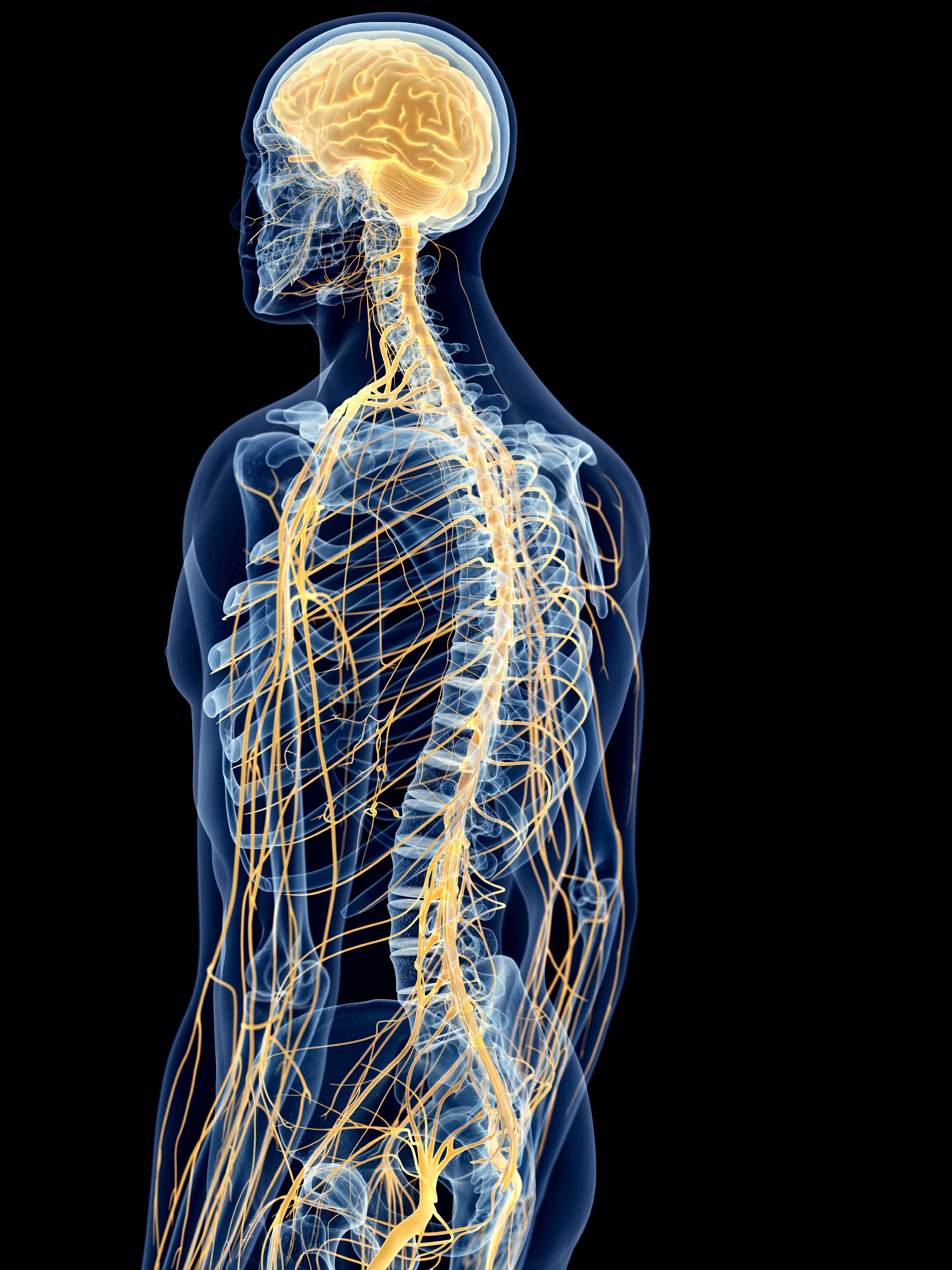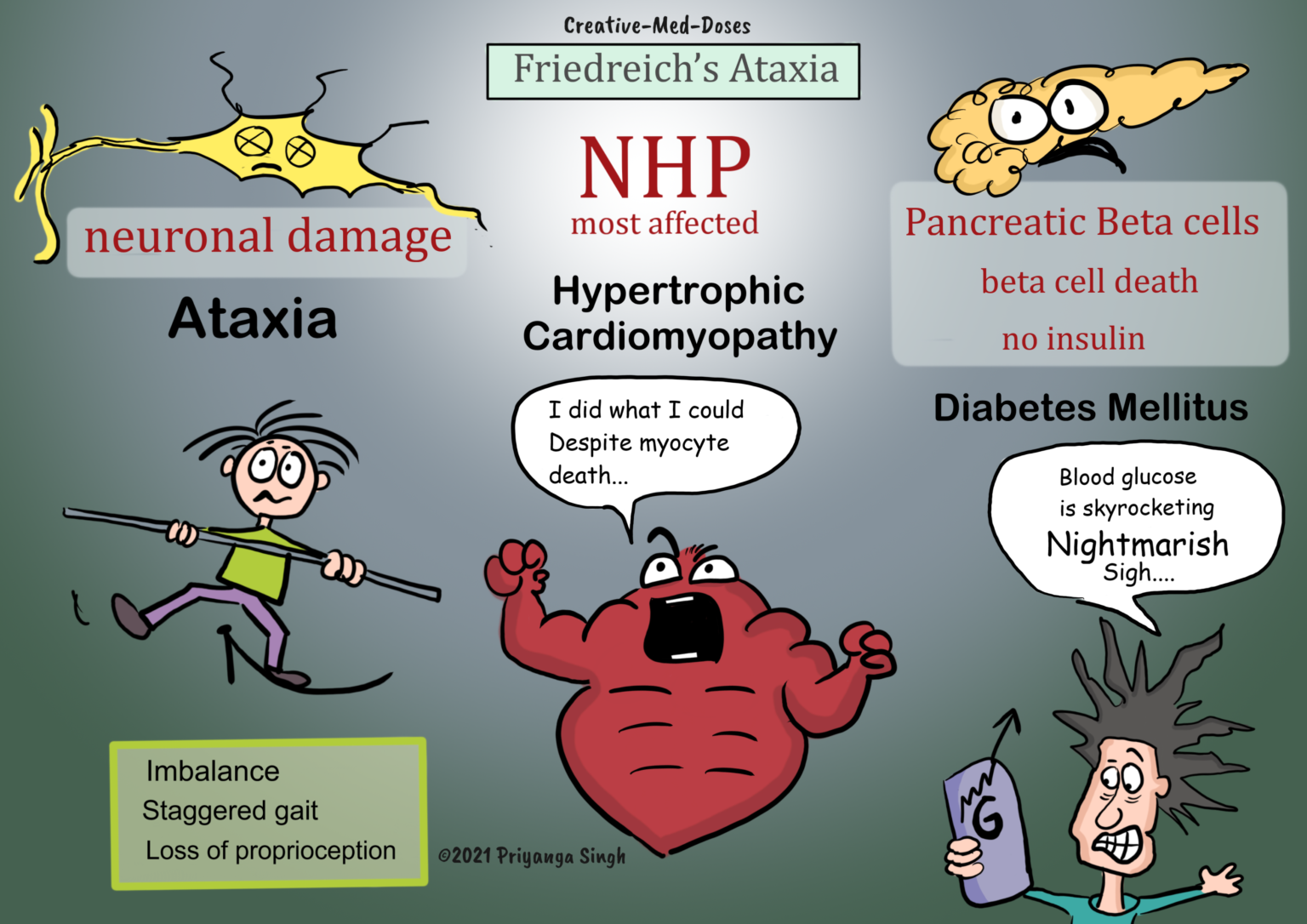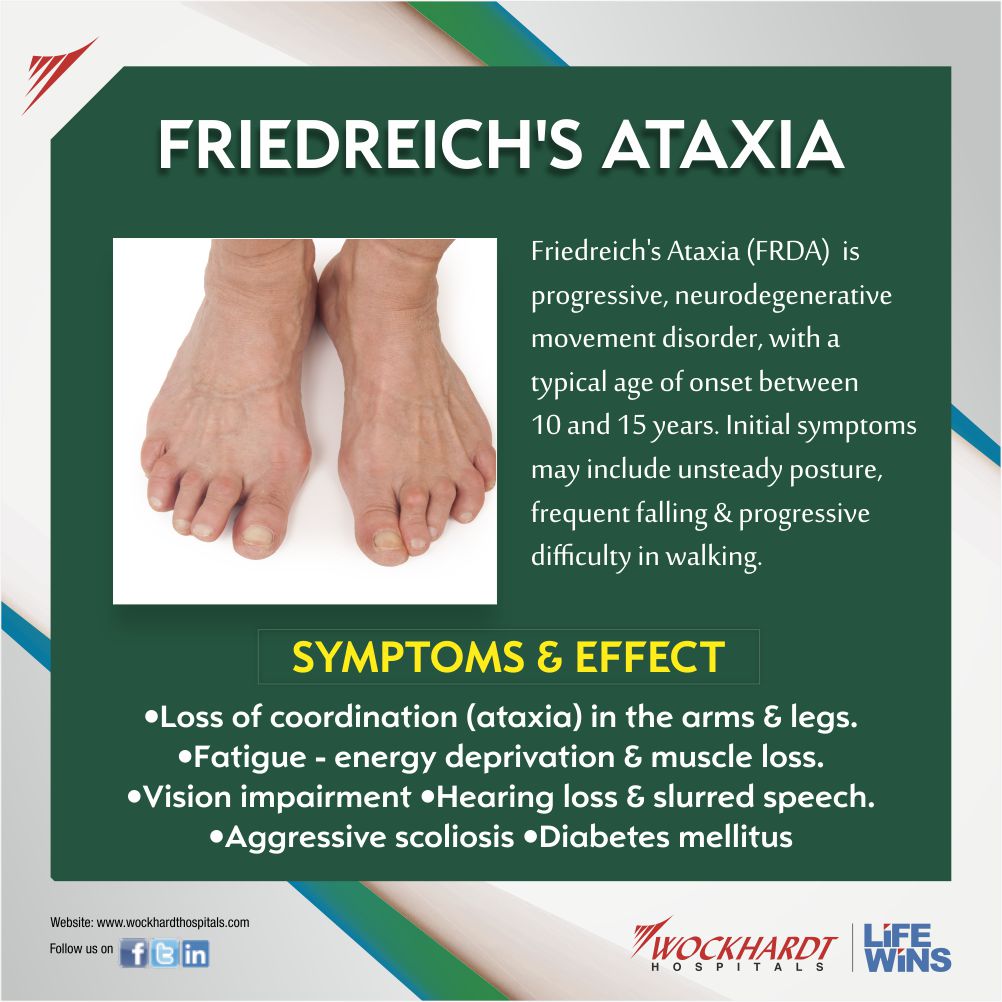
Friedreich Ataxia YouTube
Friedreich's ataxia can be diagnosed between the age 2 and a person's early 50s, but it's most commonly diagnosed between ages 10 and 15. Difficulty with walking is the most common initial.

Omaveloxolone Gets Priority Review for Friedreich Ataxia MPR
Friedreich's Ataxia is an inherited disease of the central nervous system. It was named after Nikolaus Friedreich, who first described it in 1863, and it was the first form of hereditary Ataxia to be distinguished from other forms of Ataxia. FA is the most common form of childhood onset Ataxia. In the United States, it is estimated that about.

Friedreich Ataxia FA MedlinePlus
What are the symptoms of Friedreich's ataxia? When and how do symptoms start? How do you get Friedreich's ataxia? What causes Friedreich's ataxia? How is Friedreich's ataxia diagnosed? How common is Friedreich's ataxia? 4 6 8 9 10 12 13 Management of Friedreich's ataxia 14

Ataxia Friedreich's ataxia, Foot deformities, Alliance
Individuals with Friedreich ataxia (FRDA) can find it difficult to access specialized clinical care. To facilitate best practice in delivering healthcare for FRDA, clinical management guidelines (CMGs) were developed in 2014.

ataxia de friedreich
FRDA is characterized by early atrophy of the posterior columns of the spinal cord, followed by progressive degeneration of the cerebellar dentate nuclei and their efferent fibers in the superior cerebellar pedunculi [ 6 ]. Clinically, affected individuals become overtly symptomatic only when cerebellar signs appear.

Friedreich ataxia (FRDA)
Introduction. Friedreich's ataxia (FRDA) is an autosomal recessive spinocerebellar ataxia. It is the most common inherited ataxia in Europe with prevalence showing large regional differences; between 1 in 20 000 in south-west Europe and 1 in 250 000 in the north and east of Europe. 1 In the majority of cases the disease is caused by a homozygous GAA triplet repeat expansion in the frataxin.

ゲームあれこれランキング GAME乱KING FFエク
Friedreich's ataxia ( FRDA or FA) is an autosomal-recessive genetic disease that causes difficulty walking, a loss of coordination in the arms and legs, and impaired speech that worsens over time. Symptoms generally start between 5 and 20 years of age.

MEDICAL SCHOOL Friedreich's ataxia,what to know? Friedreich's ataxia, Medical school, Medical
Friedreich's ataxia (FRDA), mainly referred to as a disorder of balance, is characterized by loss of coordination (ataxia) in the arms and legs and other neurological features, affecting about 1 in 50,000 people in the USA. FRDA also includes serious heart disease, aggressive scoliosis, diabetes and many other disease characteristics.

Managementbriznas septiembre 2019
Friedreich's ataxia is an inherited condition caused by a defect in a gene called FXN. It is a recessive genetic disorder. This means you need to inherit a copy of the gene defect from both parents to develop it. What are the symptoms of Friedreich's ataxia?

Friedreich’s ataxia absent frataxin Creative Med Doses
Learn all about Friedreich's Ataxia in this fun video about a mother who consistently makes her son "fried taxi" for dinner. This video will teach about the.

Friedreich's Ataxia Mnemonic YouTube
Friedreich ataxia is a multisystem neurodegenerative disorder and the most common of the hereditary ataxia syndromes, with a prevalence of 0.5-3/100 000 individuals of western European lineage. It is caused by a triplet repeat expansion in the FXN gene, which leads to reduced frataxin, a mitochondrial protein important for iron metabolism.

Medicowesome Friedreich's ataxia mnemonic
Friedreich ataxia (FA) is a rare inherited disease that causes progressive damage to your nervous system and movement problems. Nerve fibers in your spinal cord and peripheral nerves degenerate, becoming thinner.

Medicowesome Friedreichs Ataxia notes and mnemonic
Friedreich's ataxia is a hereditary spinocerebellar degenerative disorder named after German neurologist, Professor Nicholaus Friedreich. Unknown author, CC BY 4.0, via Wikimedia Commons Mnemonic: FRIEDREICH'S Ataxia 1. F oot deformity (progressive cavo-varus), F rataxin expression reduced 2.

Pin by nonas arc on Friedreich's Ataxia (FRDA) Mitochondria, Friedreich's ataxia, Hereditary
Friedreich's ataxia is a rare disease that affects your central nervous system. It impacts your spinal cord and the nerves that transmit and receive messages between your brain and the rest of your body. It also affects your cerebellum, the part of your brain that controls movement and balance. This disease causes gradual muscle stiffness and.

Friedreichs Ataxia
Individuals with Friedreich ataxia (FRDA) can find it difficult to access specialized clinical care. To facilitate best practice in delivering healthcare for FRDA, clinical management guidelines (CMGs) were developed in 2014.

Friedreich's Ataxia (Mnemonic for the USMLE) YouTube
Friedreich's ataxia (also called FA or FDRA) is a rare genetic condition that causes progressive nervous system damage and movement issues. It usually begins in childhood and leads to impaired muscle coordination ( ataxia) that becomes worse over time. It's a degenerative disease. Friedreich's ataxia also often leads to: